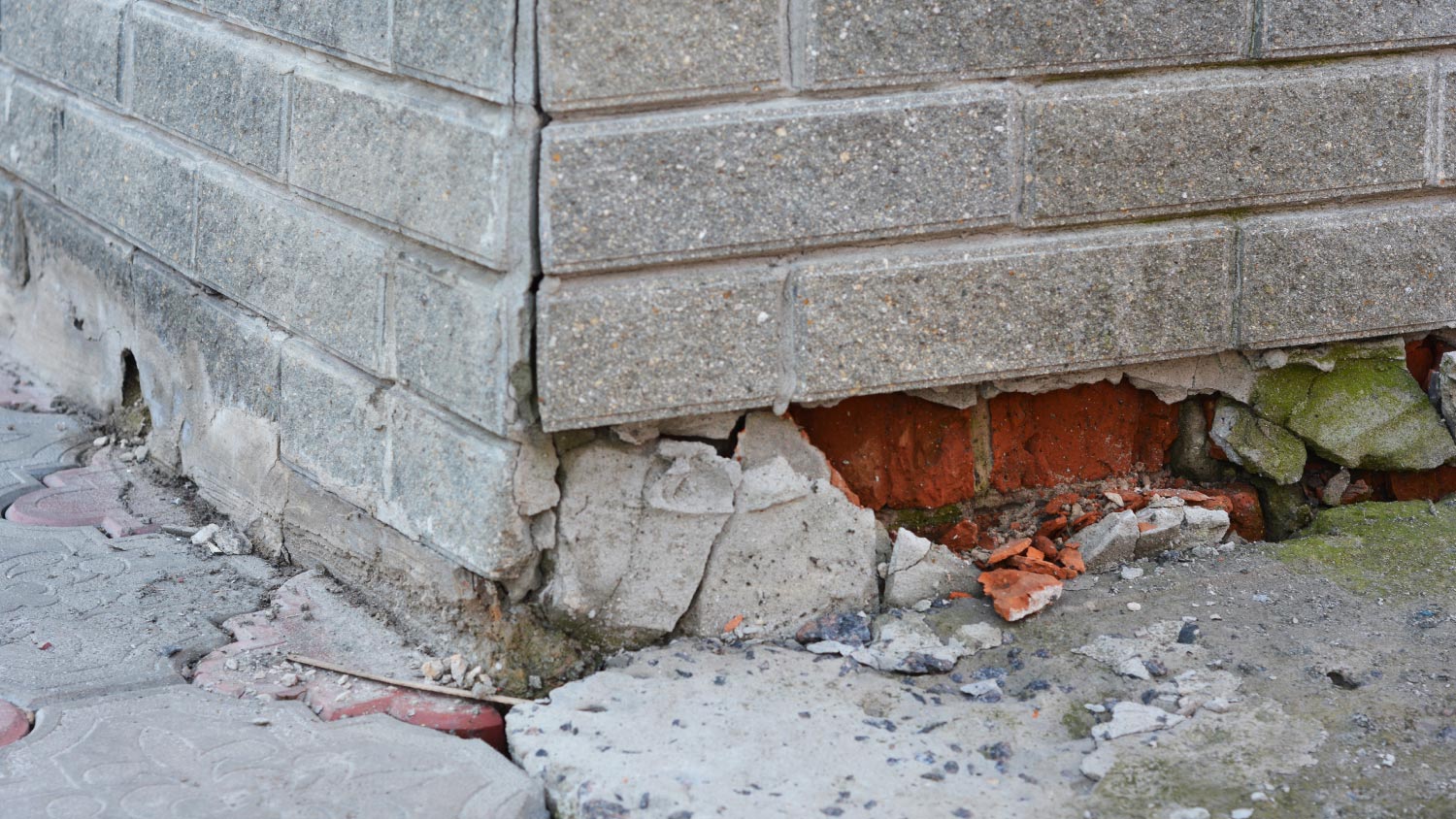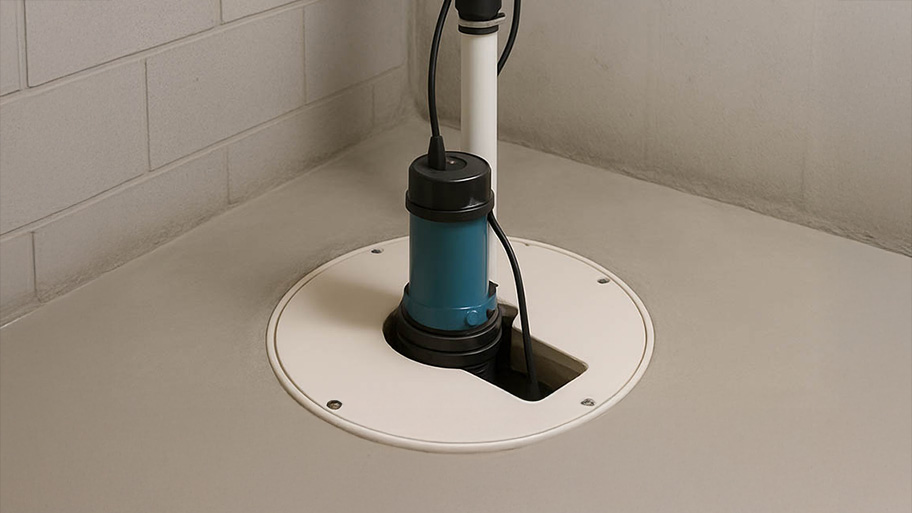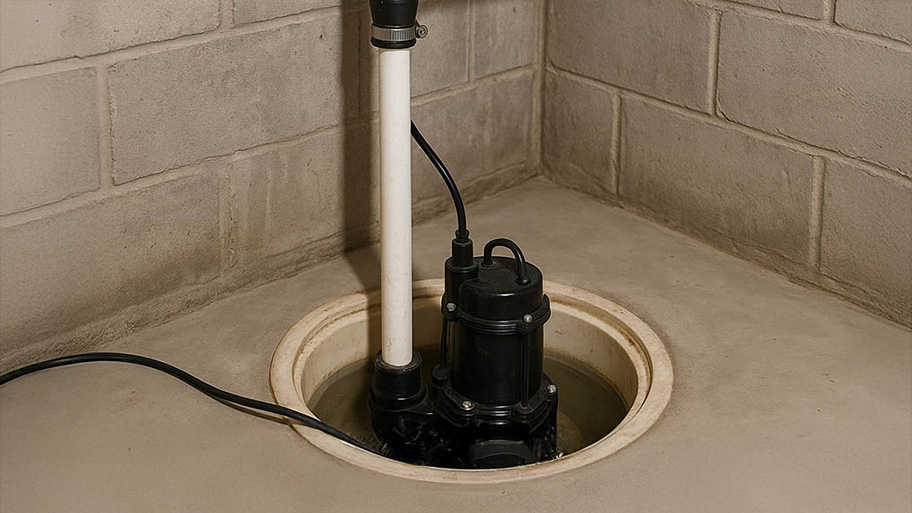
Crawl space repair costs can seem intimidating, but putting them off can lead to bigger issues. Learn about repair costs in this guide to set your budget.
Feeling drained by your foundation problems?


The foundation for your home is what holds everything together. It’s important for you to spot foundation drainage problems early so you know when it’s time to call in a foundation repair expert.
By being proactive, you can prevent the need to spend money on foundation repair costs associated with drainage problems.
Making a foundation drainage repair is not a DIY job, but rather better left to the pros. If you suspect you have a foundation issue, call a local foundation contractor who will assess the situation and suggest a solution based on the degree of the damage.

To prevent foundation damage, every homeowner should know how to spot the signs of a foundation drain problem.
For the majority of foundation damage, water is the primary culprit. When it rains, the soil absorbs water and expands, pushing the foundation up. As the weather changes, water freezes or soil dries out, causing the foundation to settle and, in some cases, cause drainage problems. If you notice that your home suffers from water drainage issues, that is a sign that you should have your foundation repaired.
Generally, if you find any of the following signs, you have a drainage problem, and your foundation needs to be repaired.
Whether it's because of high humidity climates or water damage from the foundation, you can see cracks in the walls or on the foundation.
Seeing cracks can be a sign of draining the foundation. Keep an eye out for cracks, measure them, take photos, and contact a structural engineer or a local foundation repair professional for an inspection.
A bowed wall is a sign of a serious foundation issue. If your foundation walls bow by more than three inches, then you'll need to take immediate action to fix the foundation repair issue before your wall starts to separate.
Professionals should look at it and figure out the best course of action. A pro will need to install wall anchors to stabilize and straighten walls in many cases.
A sagging or uneven floor is usually a sign of foundation problems. If you notice that things are rolling on the floor, you need to repair the foundation.
When the foundation has problems, doors and windows tend to get stuck and not close properly. A common cause is foundation sinking, and you need to level it to solve the issue.
You see water accumulation around the house and on the foundation, which causes the soil to swell and puts pressure on the foundation.
Most homes with foundation problems have moisture in the crawlspace or a leaking basement. This moisture gets into the house through cracks in the foundation in most cases.
While bugs in your house might be common among homeowners, crawling bugs will easily find their way into your home when they find cracks on the floor. If you notice an increased number of bugs, it might signify foundation issues.
You might have a foundation drainage issue if you notice a persistent musty smell or see mold appearing throughout the basement.
Since water causes most foundation problems, preventing foundation drainage issues is by getting rid of water and making it hard for water to saturate the soil around the foundation.
Be sure to regularly clean your gutter to avoid spilling water over the side of your house to your foundation.
As for downspouts, they shouldn’t connect to the foundation drain. Add downspout extenders at least six feet away from the house.
Foundation or basement waterproofing works by insulating the basement walls from the outside to ensure water doesn’t seep through the walls.
There are many different ways to waterproof your foundation, using a tar sealant outside the foundation walls, spray-on liquid elastomer coating, or roll-on adhesive elastomer membrane.
According to data from Angi, the most common foundation problem is basement flooding, making up around 29% of reported issues. Another 20% of homeowners reported issues with excessive dampness, while 15% mentioned problems with mold, mildew, and fungus. Take a look at the chart below to see how the most common foundation problems break down.
If you see any damage that needs repairing, be proactive before the problem gets worse. Drainage around foundations is an essential piece of the health of your home.
An adequate basement drain system keeps your basement dry by forcing water away from your foundation. A professional will develop a drainage system—made of one or more of the following options—that fits the type of soil and groundwater tables to protect your foundation.
Foundation Drains: Wet basements indicate a foundation drainage problem. Install or repair foundation drains and ensure they direct water to a sump pump to remove any moisture from your foundation.
Footing drain (aka french drain): An exterior pipe that is installed to carry water away from your house, such as water running from your garden or driveway.
Sump Pump: ِِِA sump pump is one of the best solutions for interior draining. The concept of a sump pump is simple. It collects water in a pit, and once the water reaches a certain level, the sump pump gets rid of the water to direct it away from the foundation.
From average costs to expert advice, get all the answers you need to get your job done.

Crawl space repair costs can seem intimidating, but putting them off can lead to bigger issues. Learn about repair costs in this guide to set your budget.

Discover how much sump pump installation costs, including average prices, key cost factors, and tips to save on your basement waterproofing project.

Sump pump replacement costs depend on the type of unit you have and the cost of labor, which varies by region. Read on to find out more about what to expect.

Can’t seem to get rid of the moisture and mold in your basement? Learn why basements tend to hold moisture and how to get rid of moisture in the basement.

Dealing with a damp basement? Follow these steps for DIY basement waterproofing to keep water and moisture out and boost your home’s energy efficiency.

When your sump pump is not working, there are a few common culprits. Use this guide to discover everything you need to know about sump pump troubleshooting.